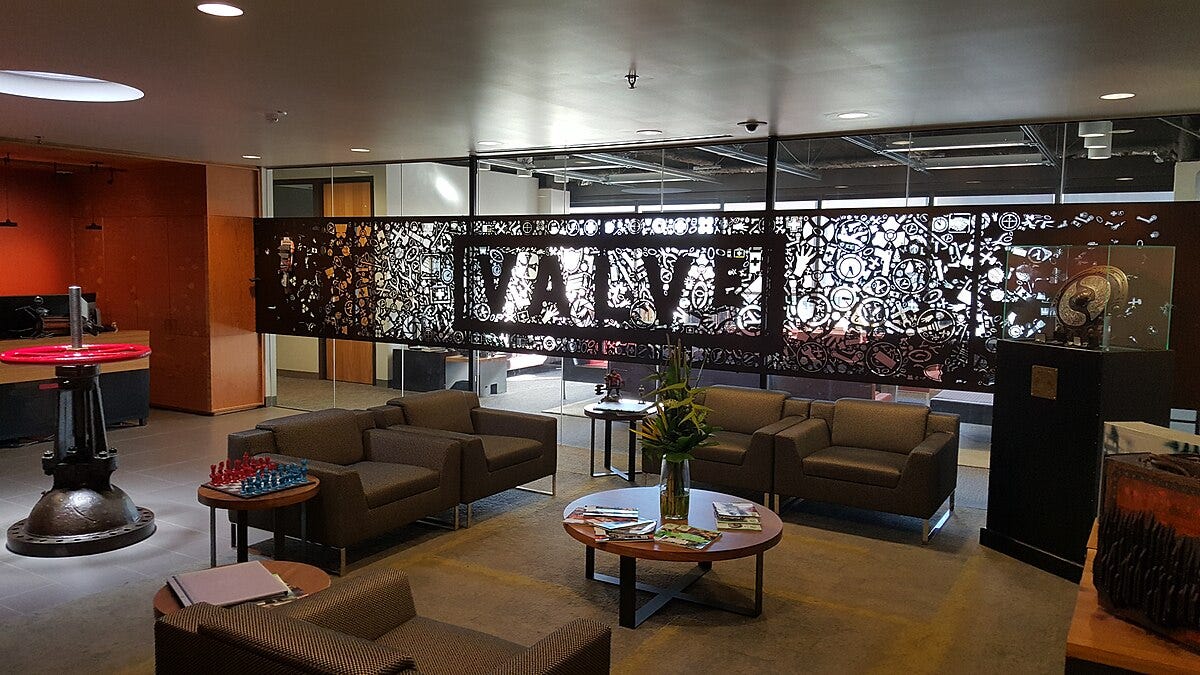Issue #1: Unpacking Data Myths, The Flat Org Experiment and The Power of Randomness🌪️
Redefining Norms: Data, Hierarchies, and Randomness in the AI Era
Welcome to the first-ever issue of "The Uncharted Algorithm."
We are about to shake up some deeply held beliefs about AI and enterprise.
In this issue, we reconsider established perspectives on data, decision-making, and organisational design.
We'll challenge assumptions that data is an endlessly valuable asset, explore how randomness can confer strategic advantages, and examine a gaming company’s non-hierarchical structure for lessons on organising without formal hierarchies and what that means for an AI-driven world.
🛢️ Is Data Really the New Oil?
The oft-used phrase “data is the new oil” paints data as a limited, physical commodity.
But this analogy falls short in the shifting nature of AI and the emerging age of large language models (LLMs).
Data has unique properties as a “non-rivalrous” digital asset. It can be instantly copied, shared, and transferred at near-zero marginal cost. Furthermore, raw data holds little inherent value in the emerging AI world.
What matters is not necessarily who has the most data, but rather who has the best models, algorithms and computing power to make use of that data.
The AI community is increasingly valuing the importance of models, algorithms, and computing power over merely amassing large volumes of data.
A robust AI infrastructure integrating these elements is pivotal for advancing AI applications.
Computational power significantly impacts the speed of machine learning training and inference, thus affecting AI progression.
Algorithmic improvements have shown to yield notable advancements in computational performance, sometimes outpacing gains from hardware enhancements.
With the rise of LLMs like GPT-4, the data paradigm is changing further.
LLMs reduce the need for curating task-specific datasets. LLMs are becoming smarter at learning from less specific data, reducing the need for collecting large amounts of specialised data for every task.
They can be fine-tuned with smaller sets of data to perform specific tasks well, challenging the old belief that more data always equals better performance.
New methods are emerging that focus on tweaking the model's settings rather than collecting more data, making the process more efficient.
LLMs may even generate their own training data. DeepMind and Anthropic have both explored the use of LLMs to produce synthetic datasets.
All of these techniques save a lot of time and effort usually spent on manually sorting and labelling data.
As LLMs become increasingly generalised, the focus shifts from training models to fine-tuning them for specific use cases. Companies will not need to hoard data across every domain, but rather identify targeted data to tweak models.
In summary, the oil analogy paints a limited view of data.
In the emerging LLM paradigm, we must discard outdated assumptions that hoarding ever-more raw data is the key to success.
Instead, developing specialised skills in fine-tuning generalised models may prove more valuable than having vast datasets.
Data remains a crucial fuel, but not in the constrained way we once thought.
🤝 The 'Non-Hierarchical' Organisation: A Case Study of Valve Corporation
In recent years, some companies have explored non-traditional organisational structures to increase autonomy by reducing hierarchy.
One example is Valve Corporation, a video game developer known for the Half-Life, Counter-Strike, and Portal series.
Founded in 1996 and based in Washington, Valve utilises an unconventional "flat" organisational model. There are no formal managers, titles, or assigned roles. Employees choose their own projects and self-organise into flexible teams.
One can argue that this structure spurs creativity, productivity, and motivation. Valve credits it for enabling innovations like Steam, their digital game distribution platform.
Critics say Valve's non-hierarchical approach contributed to slowed game releases as the company grew. The loose structure allowed some employees to coast with minimal effort.
Former employees also describe challenges. Complete autonomy meant a lack of coordination, leading to lack of follow-through. Mismatched compensation and limited mentorship for junior staff were additional concerns.
Some thrived in this non-hierarchical freedom while others craved more guidance.
How is AI related to organisational agility?
As AI advances, how should organisations adapt in their organisation structures to guide and benefit from AI capabilities?
Valve's non-hierarchical experiment provides some instructive lessons.
Below is a table that looks at ‘hierarchical vs flat’ orgs and how that plays out in terms of AI capabilities.
Key Takeaways:
AI flourishes in an unshackled environment but still requires human guidance and oversight. This is best enabled through distributed and localised governance models.
As AI rapidly advances, flat and agile organisational structures empower teams to promptly capitalise on new capabilities.
Flatter hierarchies allow cutting-edge AI adoption through hands-on training and mentorship across all levels.
Streamlined approvals prevent organisational inertia and accelerate competitive advantage.
In summary, the accelerating pace of AI progress necessitates organisational agility, flatter knowledge flows and streamlined governance. With the right human oversight, this provides the flexibility to experiment and implement new AI capabilities responsibly and rapidly.
In my view, the future calls for flattened, non-hierarchical structures that distribute authority and facilitate responsible collaboration with increasingly powerful AI partners.
Hierarchies may fade, but human guidance must remain.
🎲 Randomness as a Strategy
LLMs and their multimodal variants are rapidly altering the way we think about data, organisational structures, and models.
In this shifting landscape, old frameworks for decision-making are increasingly irrelevant. As these AI technologies evolve at an unprecedented rate, it raises the question: Can we truly plan for everything?
Perhaps the answer lies in a strategy that has been overlooked and often dismissed—randomness.
The Philosophical Argument: Embracing Uncertainty
In an uncertain world, randomness has its merits.
Philosophers like Nassim Nicholas Taleb have long argued for embracing randomness, highlighting the concept of 'Antifragility,' where systems benefit from uncertainty and variability.
When it comes to AI, especially LLMs that can understand, interpret, and generate human-like text, the "unknown unknowns" are exponentially greater.
Implementing randomness as a strategy opens up the door to serendipitous discoveries that can drive innovation.
The Mathematical Angle: Stochastic Processes
Stochastic processes in mathematics, where randomness is inherently involved, have been applied successfully in various fields including finance and engineering.
Algorithms like Monte Carlo simulations have been used for complex problem-solving and decision-making.
This mathematical framework can be applied to AI decision-making processes, where the outcomes are uncertain due to the evolving nature of LLMs.
Practical Applications: Where Does Randomness Fit?
Exploratory Data Analysis: Add a percentage of random queries alongside structured ones to discover new data patterns.
Model Training: Utilise random data subsets for training LLMs and compare their performances for better generalisation.
Inclusive Decision-making: Use random sampling of team members at various levels to contribute to strategic choices.
Product Ideation: Let LLMs generate a range of product ideas, randomly pick a few, and run tests to evaluate their potential.
Shaking Up The Status Quo
Randomness challenges the traditional top-down control in enterprises, democratises decision-making, and opens up the field for unexpected yet beneficial outcomes.
A Scaffolding for Randomness as a Strategy using AI
1. Define Rules
Before you dive into the sea of randomness, it's crucial to know how deep you can go. Set a specific budget that you're willing to allocate to experiments that include a random element. This acts as a financial safeguard, ensuring that your explorations don't dig into critical resources.
Alongside the budget, set ethical guidelines that act as your moral compass. These could range from data privacy concerns to ensuring fair treatment in random team assignments.
2. Test Scenarios
Once your rules are set, it's simulation time. Brainstorm with an LLM like ChatGPT to model what would happen if you introduced random elements into your existing processes.
For instance, you could simulate the impact of randomly selecting projects to fast-track or using AI to propose a random restructuring of a team. These simulations will give you a risk-assessed view of what could happen, helping you anticipate both potential gains and pitfalls.
3. Implement
After testing, it's time to bring the randomness to life. You could form ad-hoc teams from different departments to work on short-term projects, chosen by a random algorithm.
Or at the start of each meeting, you could have an AI tool introduce a 'wild card' topic that wasn't on the agenda but could spur innovative discussions. The goal here is to shake up the usual routine enough to spark fresh ideas and approaches.
4. Analyse & Adjust
Randomness is exciting, but it's also, well, random! That's why it's vital to use AI tools to continuously measure the impact of these random strategies on your organisation's performance metrics.
Are they leading to more innovation? Better teamwork? Higher revenue? Depending on the findings, you may need to adjust the 'dosage' of randomness in your strategy.
5. Regular Check-ins
Randomness isn't a 'set and forget' strategy; it requires ongoing management. Make it a point to periodically evaluate how well the randomness is serving your organisational goals.
Use these check-ins to decide if you should scale up the random elements for greater innovation or scale them back to focus on more predictable, traditional strategies.
Conclusion
Randomness as a strategy in the age of rapidly evolving AI and LLMs can be a unique approach to spur innovation, discover unknown opportunities, and even hedge against unforeseen risks.
The key lies in balancing randomness with structured strategies to exploit the best of both worlds.
By embracing randomness, enterprises can better prepare for a future that is anything but predictable.
It's a call for organisations to be not just robust or resilient but antifragile - ready to benefit from the disorder and uncertainty that the age of AI brings with it.
🚀 Upcoming Free 1 Hour Webinar: Elevate Your Professional Game with AI!
Ready to take a deep dive into the world of Generative AI and how it can transform your enterprise? Don't miss our upcoming FREE 1-hour live webinar!
What You'll Get:
A 15-minute deep-dive into leveraging Generative AI for workplace productivity without compromising data security.
A hands-on lab session to show you the practical applications of ChatGPT in your daily tasks.
When: Friday, Nov 3, 2023
Time: 9 am US PDT/ 12 pm US EDT/ 4 pm UK/ 5 pm CET
Whether you're a newbie or have some experience with AI, we've got actionable insights for everyone.
⏰ But hurry, the spots are limited! ⏰
👉👉 [Register Now!] 👈👈
Fascinated by the Topics? 🎯
If discussions around the unpredictable facets of AI, the future of non-hierarchical organisations, or the untapped strategies like "Randomness in Decision-making" spark your curiosity - don't keep it to yourself!
🔄 Share on Social: Loved our deep dives? Click to share and tag peers who need to be in the loop!
📧 Forward It: Know someone wrestling with AI ethics or grappling with data dilemmas? They'll thank you for this read.
Your support helps us challenge the status quo. Let's redefine the AI and enterprise landscape together!









